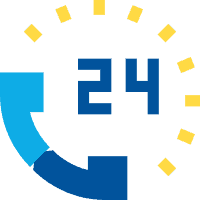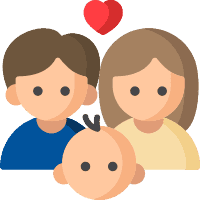[et_pb_section fb_built=”1″ admin_label=”section” _builder_version=”4.16″ global_colors_info=”{}”][et_pb_row admin_label=”row” _builder_version=”4.16″ background_size=”initial” background_position=”top_left” background_repeat=”repeat” global_colors_info=”{}”][et_pb_column type=”4_4″ _builder_version=”4.16″ custom_padding=”|||” global_colors_info=”{}” custom_padding__hover=”|||”][et_pb_text admin_label=”Text” _builder_version=”4.16″ background_size=”initial” background_position=”top_left” background_repeat=”repeat” global_colors_info=”{}”]
Speech skills don’t always develop at a uniform pace. As children absorb, emulate, and learn speech, they master some sounds at different rates. For example, the articulations of the L, R, S, Th, and Z sounds are often particularly challenging for children. These especially difficult intricate sounds for children to produce can sometimes take a bit of extra care to learn.
Explaining Difficult Sounds for Children to Learn
That the hardest sounds for children to learn are often the l, r, s, th, and z is probably not surprising to many parents, who regularly observe their children mispronouncing these sounds or avoiding words that use these letters. Typically, such behavior is completely normal for children. Most children do not display mastery of l, r, s, th, or z sounds until ages 6-8.
There are some issues that can disrupt or delay their development in terms of learning sounds beyond a more typical age range. Children with hearing problems, for example, could find it challenging to reproduce certain sounds because of the way that they are hearing the sound. For other children it may be delayed muscle development or other physiological impediments that are affecting their pronunciation of especially difficult phonemes, such as l, r, s, th, or z sounds.
A speech language pathologist will be able to accurately diagnose your child’s speech progress and recommend a treatment where warranted.
How to Pronounce the Hardest Sounds for Children
The l, r, s, th, and z sounds tend to develop later in childhood because they all require specific and nuanced motor control. Therapies to improve pronunciation, therefore, vary by the challenge being addressed.
- L sounds: Most children will typically start to develop their L-sound skills around the age of three. But it’s not unusual for children to struggle with this particular sound as their tongue strength develops. Often, kids will use the easier-to-articulate “w” sound as a replacement (“lemon” will sound like “wemon”). To make the L-sound, the tip of the tongue is lightly touching the roof of the mouth (there’s a small ridge on the roof of the mouth near the front teeth that makes for an excellent placement marker) and the vocal cords are activated. Children having trouble with this articulation can watch themselves in the mirror, practicing to ensure that they have the correct tongue placement.
- R sounds: Speech pathologists generally refer to the inability to pronounce the r sound as rhotacism. Children with rhotacism will often mispronounce the “r” sound as a “w” sound instead. The “r” sound is among the hardest for children to master, and so it’s usually the sound that presents latest in their childhood (most often around age 7 or 8). Children that are treated for rhotacism will typically work with a speech therapist to ensure the lips and tongue are in the proper position. In addition, tongue strengthening exercises will greatly assist in developing this phoneme.
- S sounds: The s sound is created by placing the middle of the tongue towards the roof of the mouth or just behind the lower
Our Pediatric Speech Therapy Services teeth. Additionally, the teeth are together and the lips are kept slightly parted. The s sound is interesting because it does not require the activation of the vocal cords at all–the sound is generated simply by moving air through the mouth and lips. Children who have difficulty with the s sound will often make a “th” sound instead. While treating your child, a speech therapist will introduce verbal, visual, and tactile cues to help the child with proper sound production. Our blog, Speech Therapy For S and Z Sounds, gives you more information.
- Th sounds: There are two different pronunciations to /th/. One is the ‘th’ in throw (voiceless) and the other is the ‘th’ in then (voiced). To make a “th” sound, the tip of the tongue is placed between the teeth and air forced out of the mouth. A modulation of the larynx will then determine which particular “th” sound is made. Children will usually learn how to make this sound between the ages of 5-7. If, however, the child has difficulties, a speech therapist can work with the child to provide guidance and assistance.
- Z sounds: The z sound is produced similarly to the “s” in terms of oral placement. However, to produce a “Z” the tongue is placed slightly farther back in the mouth and the larynx is activated. Children having trouble making both “s” and “z” sounds will often substitute “th”. If this is the case, especially as the children continue to advance their language acquisition, a speech therapist can help children become adept at these challenging articulations. Our blog, Speech Therapy For S and Z Sounds, gives you more information.
It’s important to remember that all children will develop speech skills at their own pace. Difficult sounds for children don’t necessarily by themselves represent a disorder or syndrome. A speech therapist will be able to provide children with tools, oral motor tasks to build strength and coordination, and strategies designed to make accurate articulation production.
The Importance of Speech Sounds
What’s true for l, r, s, th, and z sounds is true for the rest of the sounds we learn: humans learn speech sounds productions by listening to and emulating the people around them, a process called linguistic acquisition. Learning to correctly pronounce even difficult sounds can be especially critical in the continued development of children, especially as it relates to the ability to communicate.
That’s why many speech therapists emphasize phonics in their treatments. When children are able to successfully articulate the l, r, s, th, and z sounds, for example, they are more accurately able to sound out words when learning to read or write. This means that their spelling will be more accurate. More importantly, however, the ability to correctly sound out words will lead to greater reading comprehension skills as children continue to develop.
Most speech therapists consider it vital that children have robust speech skills before learning to read and write. Engaging children in sound learning as often as possible can help them develop lifelong speech skills.
When Your Child Has Trouble
It’s perfectly normal for children to experience challenges when learning how to articulate l, r, s, th, and z sounds. Pushing your child too hard to make “correct” pronunciations can actually have the opposite effect.
That’s why speech therapists use a variety of tools and strategies to help your child learn to successfully pronounce l, r, s, th, and z in isolation words and spontaneous speech.
If you have questions about how your child’s speech is developing contact The Center for Speech & Language Development to schedule a consultation with a speech pathologist who will be able to evaluate your child and recommend a treatment plan when applicable.
[/et_pb_text][/et_pb_column][/et_pb_row][/et_pb_section]



